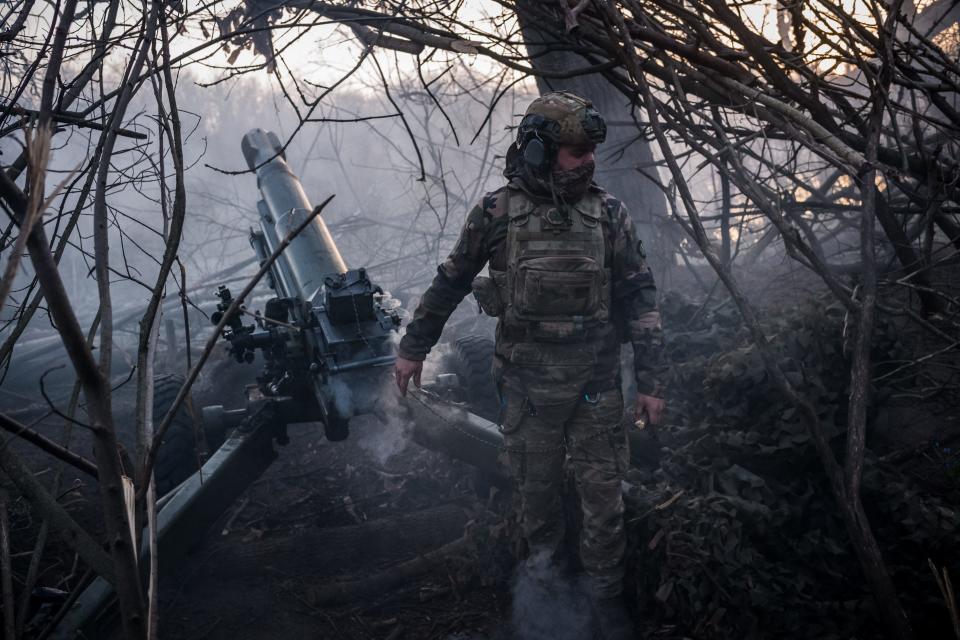-
India is trying to modernize its 1.5 million-strong military with lessons from Ukraine.
-
Until a few years ago, Russia supplied India with numerous weapons such as tanks and jets.
-
India is upgrading its artillery and switching to 155mm howitzers, the NATO standard.
As India ramps up defense spending amid tensions with China and Pakistan, it is closely examining the Ukraine conflict for clues to the future of warfare and ways to thwart its neighbors.
Some lessons that Indian experts have already learned: India needs a lot of artillery, drones and cyber warfare capabilities.
Comparing Ukraine with India is difficult. Ukraine faces a major enemy – Russia – while India struggles with its old foe Pakistan to the west and an increasingly powerful China on its northwestern border. The Russo-Ukrainian War is largely fought in an Eastern European landscape of plains and forests, which has a moderately good road network suitable for mechanized warfare. India must prepare to fight in diverse terrain and climate conditions, including desert, jungle and some of the highest mountains on earth.
India is also trying to modernize and standardize the equipment of its armed forces. The armed forces consist of around 1.5 million soldiers, equipped with a potpourri of equipment from several nations as well as indigenous Indian equipment. Until a few years ago, Russia supplied many weapons such as tanks and fighter jets, but India is increasingly acquiring weapons from Western nations, including American howitzers, French jet fighters and Israeli drones.
The Indian Army’s artillery, for example, includes more than 3,000 weapons and several rocket launchers, including Russian, American, Swedish and South Korean designs. Indian observers believe that Ukraine shows the importance of having abundant and modern artillery. Artillery arguably became the decisive combat weapon in this war, with the Russians firing 10,000 shells per day and forward, while an ammunition shortage has limited Ukraine to about 2,000 shells per day. This flood of firepower forced both armies to intervene and turned the conflict into trench warfare.
“Looking at the demonstration of artillery fire in the ongoing Russia-Ukraine war, there are two lessons for the Indian Army,” wrote Amrita Jash, an assistant professor at the Manipal Academy of Higher Education, in a report for the Observer Research Foundation. an Indian think tank. “Firstly, this firepower can be a ‘battle-decisive factor,’ and secondly, the time between acquiring the target and firing has drastically shortened: where it used to take five to ten minutes, it now takes just a minute or two.”
In fact, India is already planning to modernize its artillery arsenal, including switching to 155mm howitzers – NATO’s standard caliber – and developing longer-range grenades and rockets.

The air war over Ukraine has proven to be a surprise, especially given Russia’s superiority in aircraft numbers and technology. Anti-aircraft missiles have prevented both sides’ air forces from penetrating enemy airspace, and Russian planes have been limited to firing standoff missiles at Ukrainian cities rather than providing air support to their ground forces. Drones have become the stars and workhorses of the air war, with both sides deploying hundreds of thousands of drones – and losing.
There are lessons here for the Indian Air Force, according to Arjun Subramaniam, a retired Indian Air Force vice marshal who helped write the ORF report. India must prepare to “gain control of the air under limited time and space conditions in both a short, limited, high-intensity conflict and a longer, protracted conflict.” The Air Force must also ensure that its plans are synchronized with ground and naval forces. India should also continue to focus on suppressing enemy air defenses, “particularly against an adversary more interested in denying airspace than controlling it.”
Not surprisingly, Subramaniam wants the Indian military to increase drone development and production. But he is also concerned about the possibility of a mass drone attack on India. “Of greater importance is the need to rapidly develop anti-drone capabilities that would be essential to responding to large-scale surprise attacks and maintaining effective second-strike capabilities,” he wrote.
Cyberwarfare has also become a crucial tool in Ukraine in everything from hacking into military computers and critical infrastructure to spreading propaganda and deepfakes in global media. ORF researcher Shimona Mohan noted “the increasing role of predominantly civilian organizations such as Big Tech in conflict situations and the deepening interaction of civil-military partnerships around dual-use technologies such as AI”.
Mohan recommends India invest in cyber warfare like other nations are doing. “However, if this is not possible for socio-political or economic reasons, it should be a priority for countries to ensure that their strategic geopolitical allies are formidable technology powers – for example, Ukraine received a lot of support in this war from its more technology-oriented countries.” smart partners like the USA and private technology companies.”
Michael Peck is a defense writer whose work has appeared in Forbes, Defense News, Foreign Policy Magazine, and other publications. He holds an MA in political science from Rutgers University. Keep following him Twitter And LinkedIn.
Read the original article on Business Insider
